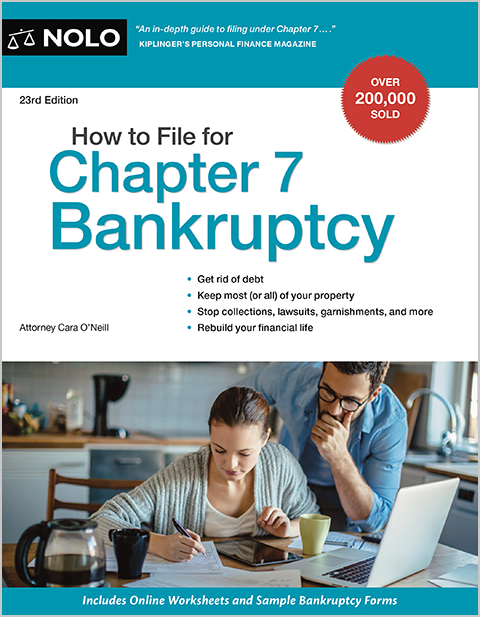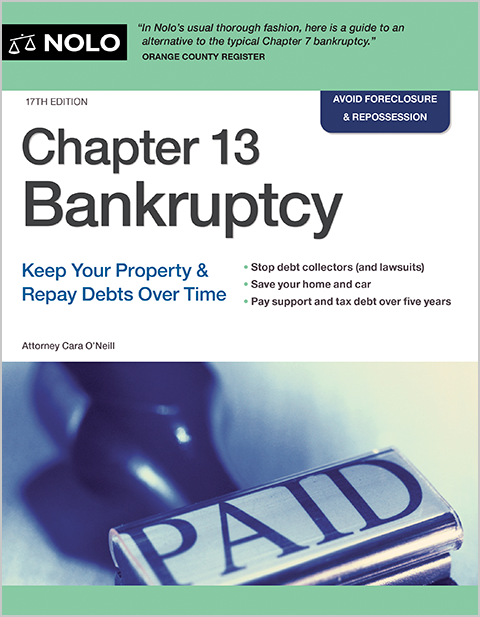When valuing your personal property in bankruptcy, use the current value. Here's how.
When completing the bankruptcy forms, you must provide the value of each item of your personal property, such as cars, furniture, jewelry, and the like. You will list these values on Schedule A/B of the bankruptcy forms, as well as a few other forms.
The standard you use in valuing your personal property is the current value. Read on to learn the various methods you can use to get this value for each of your personal belongings.
Current Value
When you list all of your property on Schedule A/B, you'll be asked to provide the "current value" of your personal property, which includes everything other than real estate.
Another term for current value is the "fair market value." Fair market value is the price that a willing seller and buyer would agree that the item is worth assuming that there is no particular pressure to conclude the sale.
It's not the cost of replacing your items with new items. The value will likely represent the amount you paid for the item, minus deductions for wear and tear. The current or fair market value will be what a reasonable person would be willing to pay for your items. You'll list the current value as of the date you file for bankruptcy.
How to Estimate Value of Personal Property
The best method for determining the current value for your property will depend on the property type.
Motor Vehicles
You're likely familiar with valuing a car or truck. It's not much different in bankruptcy.
- Trade publications. If the vehicle is only a few years old or there is still a high balance owed on the auto loan leaving little or no equity in the car, looking up the retail value in a trade publication or its online version might be all you need to do. The two most commonly used include Kelley Blue Book and NADA guides. Be prepared with the mileage, the particular make and model, the year and the vehicle's general condition. Some of the online versions also request information on the area of the country where you are located.
- Comparable sale prices. If you have an older vehicle, the trade publications might be less helpful. You could check the newspaper advertisements or online sites to see what people in your area are selling similar vehicles. Also, you can check local used car dealerships to look for comparable vehicle prices.
- Appraisals. You could also have your car appraised. Some car dealerships will provide an appraisal, but you need to be careful that they are not providing you with a trade-in value that is dependent on your buying a new vehicle from them. The appraisal should represent the amount you would need to pay to replace your current car. Another option would be to pay a professional appraiser to assess the value of your vehicle. Your mechanic might be helpful in providing a value, but the bankruptcy trustee or the court may be a little suspicious if you receive an appraisal from someone with whom you have had a long time relationship. Information from your mechanic on any necessary repairs or problems with your vehicle may help the appraiser make a more accurate valuation.
Be sure to take into account the age and condition of the vehicle, and whether particular repairs will be necessary. Also, be prepared to bolster your valuation with photographs and repair estimates, as appropriate. To learn more about your options for dealing with your vehicle and auto loan, see Nolo's section on Your Car in Chapter 7 Bankruptcy.
Household Goods
You can use different methods for valuing your household goods, including furnishings, clothing, and electronics, depending on what best fits your situation.
- Comparable sale prices. A reasonable way to value your household items would be to visit various thrift stores, such as Goodwill, or local flea markets and garage sales, to see what comparable goods are selling for. Keep a record of the dates and locations you visit to support your valuation. You can also check online sales or auction sites. Wherever you find your values, make sure to list the age and condition of the property to give the trustee a better idea of what you are valuing.
- Appraisals. Although often unnecessary, you can always use an appraisal for any household item that's of particular value, such as any antiques that you might own. Keep in mind that you likely won't need to go to the expense unless the bankruptcy trustee appointed to your case is attributing a value that you don't agree with.
Jewelry, Furs, Artwork, and Collectibles
These types of items could need an appraisal. Make clear to the appraiser that you are looking for a current sale value appraisal and not an appraisal for insurance. The valuations may be different. Pawnshops might give you the lowest appraisal value, but because they have a reputation for undervaluing property, the appraisal would likely draw an objection by the trustee. A reputable dealer in estate property may be the best source for appraisals on these items.

